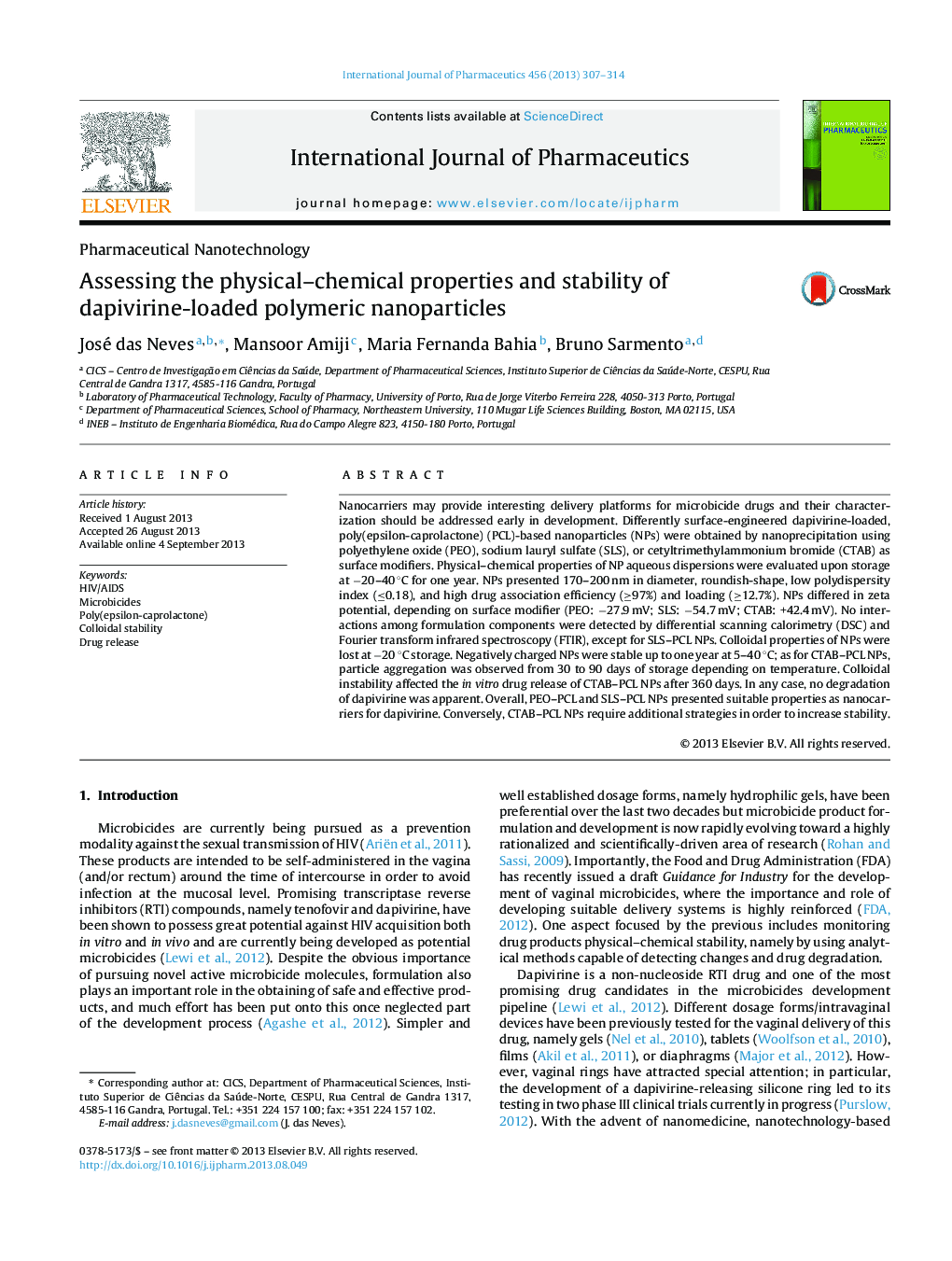| Article ID | Journal | Published Year | Pages | File Type |
|---|---|---|---|---|
| 2502158 | International Journal of Pharmaceutics | 2013 | 8 Pages |
Nanocarriers may provide interesting delivery platforms for microbicide drugs and their characterization should be addressed early in development. Differently surface-engineered dapivirine-loaded, poly(epsilon-caprolactone) (PCL)-based nanoparticles (NPs) were obtained by nanoprecipitation using polyethylene oxide (PEO), sodium lauryl sulfate (SLS), or cetyltrimethylammonium bromide (CTAB) as surface modifiers. Physical–chemical properties of NP aqueous dispersions were evaluated upon storage at −20–40 °C for one year. NPs presented 170–200 nm in diameter, roundish-shape, low polydispersity index (≤0.18), and high drug association efficiency (≥97%) and loading (≥12.7%). NPs differed in zeta potential, depending on surface modifier (PEO: −27.9 mV; SLS: −54.7 mV; CTAB: +42.4 mV). No interactions among formulation components were detected by differential scanning calorimetry (DSC) and Fourier transform infrared spectroscopy (FTIR), except for SLS–PCL NPs. Colloidal properties of NPs were lost at −20 °C storage. Negatively charged NPs were stable up to one year at 5–40 °C; as for CTAB–PCL NPs, particle aggregation was observed from 30 to 90 days of storage depending on temperature. Colloidal instability affected the in vitro drug release of CTAB–PCL NPs after 360 days. In any case, no degradation of dapivirine was apparent. Overall, PEO–PCL and SLS–PCL NPs presented suitable properties as nanocarriers for dapivirine. Conversely, CTAB–PCL NPs require additional strategies in order to increase stability.
Graphical abstractFigure optionsDownload full-size imageDownload high-quality image (270 K)Download as PowerPoint slide
